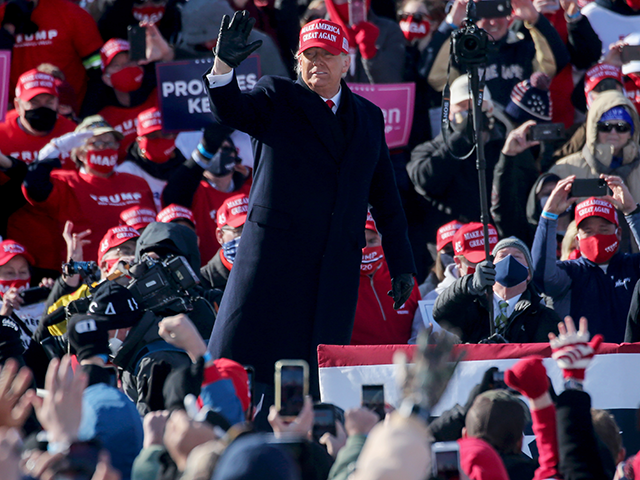Donald Trump loves his big political rallies and so do his supporters. Many people who have attended liken the rallies to music festivals or rock concerts.
They’re also uniquely effective at garnering support, increasing turnout, and raising campaign contributions, according to a study by Harvard political scientist James Snyder and economist Hasin Yousaf of Australia’s University of New South Wales.
No wonder Trump has been holding so many of them lately.
“We find that Trump’s rallies produced a short-lived increase in his support over Clinton (especially among leaning Republicans), intention to vote (especially among strong Republicans), and individual campaign contributions for him,” the professors write in the abstract of their paper.
The pair looks at data from a large survey – the Cooperative Congressional Elections Study (CCES) – that allowed them to look at support for Trump a few days before a rally and a few days afterward in areas near where the rally was held. They then compared this to before and after support for Trump in places that were not near the rally, allowing them to isolate the effect of the rally from other factors.
“Since the 2016 CCES has a total sample size of almost 65,000, and since Trump held 71 rallies in 15 states during the survey period, mostly at sites in large media markets, even after restricting the sample we have many thousand respondents,” the paper explains.
The paper has three main findings that indicate the effectiveness of the rallies:
- “First, we find that Trump rallies appear to have increased his support over Clinton by about 4.5 percentage points on average. The effects are short-lived, lasting about one week. Moreover, the effects are especially large for respondents who identify as “weak” Republicans and Republican-leaning independents.”
- “Second, Trump rallies also appear to have increased the intention to turn out for “strong” Republicans and Democrats, but not for other respondents.”
- “Third, rallies by Trump increased the individual campaign contributions for him. The effect is short-lived and dies out in less than six days.”
The rally boost appears unique to Trump. Looking at Clinton’s rallies, they found no significant effects. The same with rallies for Barack Obama, Mitt Romney, and John McCain.
“On average, the intention to vote for Trump increased by 4.5 percentage points during the 10 days after a Trump rally in media markets with Trump rallies relative to media markets in swing states without Trump rallies,” Snyder and Yousaf write. For the others, however, “there is little impact of rallies by other candidates on the intention to vote for those candidates.”
So why are Trump’s rallies so effective? It’s not clear. The paper finds that the answer is not the level of media coverage.
“In terms of channels, we find that local media coverage of all candidates increased around their rallies, suggesting that the quantity of media coverage alone does not explain the findings,” Snyder and Yousaf write.
One possibility not tested is that rallies may be particularly effective for populist candidates because populists like Trump lack the political infrastructure that comes from having the support of a party establishment. So rallies effectively organize those who are not attached to the usual political institutions.
Or maybe Trump is just better at holding rallies than other politicians.
The study could shed light on why Trump was able to outperform pollster forecasts, which have trouble taking into account short-term or last-minute shifts in voter preferences or surges in voting beyond expectations.
“We find that Trump rallies resulted in a 5.1 percentage point increase in the intention to vote,” Snyder and Yousaf write.

COMMENTS
Please let us know if you're having issues with commenting.